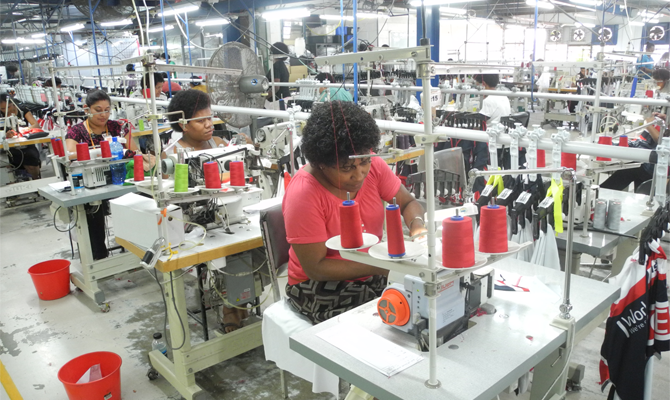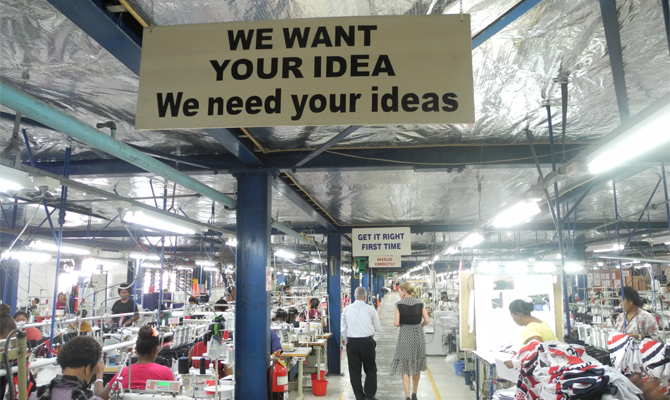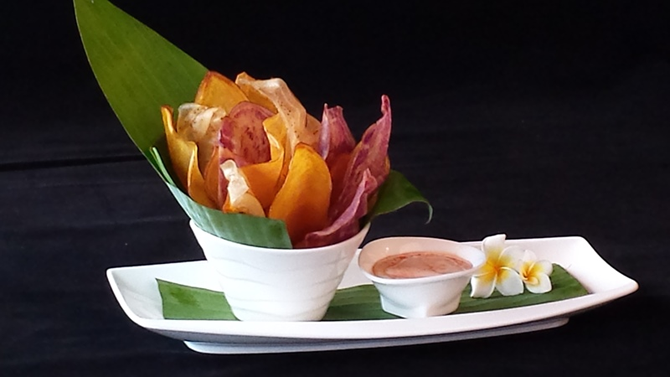-
A stroll along Fiji’s famous beaches throws up a United Nations of accents, along with some dozing and the odd case of sunburn. Listen more closely, and you will hear plenty of Aussies, Kiwis and, to a lesser extent, Europeans.
Fiji wants to broaden the tourist catchment. It is looking to tap into valuable niche markets for Chinese and Indian tourists, despite them not being traditional beachcombers.
" Across [Fiji], from agriculture to technology to tourism, diversification and the need to develop a unique product are seen as vital."
Mark Skulley, Freelance business journalistAbout two thirds of arrivals to Fiji come from the ANZAC contingent but the government wants to grow the foreign exchange earnings from tourism from about $F1.6 billion now to more than $F2 billion by the year 2020.
Tourism Minister Faiyaz Koya and other players have noted the growth of Chinese tourism to destinations like the Maldives and want a bigger slice of the action.
"These particular tourists that we are looking at, they’re into everything," Koya told Bluenotes.
"It’s the younger generation that really want to go out and do the adventure tourism … all the weird and wonderful things that we have like white water rafting, shark diving. It's no different from the Aussie or the Kiwi tourists who come looking for that kind of stuff."
The strategy to diversify tourism streams is one evident across Fiji: the economy is dependent upon reasonably robust but quite restricted sources of revenue across tourism and commodities. That’s a risk.
Across the nation, from agriculture to technology to tourism, diversification and the need to develop a unique product are seen as vital.
OPEN SKIES
National airline Fiji Airways has three services a week from Hong Kong and is investigating direct services to mainland centers like Shanghai and Beijing.
It also operates a service from Singapore, which aims to be a gateway for Indian tourists. China has followed up long-term infrastructure spending in Fiji, with investment in tourism projects like the $F500 million Wyndham Silkroad Ark Hotel
However, the Fiji government is cautious about seeking direct China flights- particularly where it would require a reciprocal 'open-skies’ policy that could see Chinese carriers swamp Fiji Airways.
A major tourism operator, Tony Whitton (also a director of the Reserve Bank) says airline access sparks regular debate but he supports having a strong national carrier.
"It's a delicate balance,” he says. “If you ask me, 'Should we go open skies?' You are completely at the mercy of foreign interests."
Over the last few years, Whitton's Rosie group has organised charters from Shanghai and Beijing and also from Taiwan. The charters have been timed in February, around Chinese New Year, and during the low season for Fiji's tourism sector.
Whitton says Fiji can satisfy both tourists and travellers.
"The tourists are potentially the people coming here from Australia and New Zealand who are coming here on packages,” he says.
“The travellers are the ones who are coming because they've heard of the Jean-Michel Cousteau resort in Savusavu or they've heard about some beautiful diving up in Tavenui."
Minster Koya says Fiji can't compete with Bali and Thailand on price but can play to its strengths – its people and the environment – without pushing the infrastructure to the limit.
"It's 100 per cent about the yield for us" he says, emphasising the importance of a unique Fiji offering.
This includes developing ‘wellness tourism’ and organic products, a good fit with Fiji's natural attractions and reputation as a safe, relaxing destination for both families and high-end travellers.
NATURAL
Fiji’s natural brand opportunity extends beyond tourist nights. A system is being developed for certifying farmland as organic, which will work well with the increased connections to Singapore and China.
"People are getting more and more conscious about what they eat and Fiji by nature is organic," Koya says.
"There's a lot of people who plant their own cassava plant or the taro plant … they don't use fertiliser."
The Minister cites organic pink ginger grown on the island of Wakaya by the Canadian entrepreneur David Gilmour, who founded FIJI Water, one of the country's biggest export earners.
"Their ginger really is 500 times more powerful than any other type of ginger in the world,” Koya says. “We have the potential to have a huge organic base here, huge."
(Chili, too. For those who like it hot, the author can recommend Fiji's cult-status ‘bongo’ chili, even though it almost had him calling for the fire brigade.)
However, the growth of niche agriculture raises the issue of land, which remains sensitive in Fiji. About 88 per cent of Fiji is owned by the mataqalis (or clans) of indigenous (iTaukei) Fijians and, under the Constitution, can only be leased, not sold.
Traditionally, most of the country's sugar cane farms were run by Indo-Fijian families but the long-term leases are expiring, which makes it harder to attract on-farm investment. The younger generation is also opting to look for other work, making for manpower shortages.
Fiji's ageing sugar mills also need investment and a long-term preferential trade deal with the European Union on sugar has just ended.
The Asian Development Bank concluded in a major report last year the sugar industry was making a "gradual recovery" under reforms by the Fiji Sugar Corporation, but it remains unfinished business with some 200,000 people still relying on the sector.
NOT JUST SAND, LAND
The iTaukei Land Trust Board (TLTB) had a monopoly on the leasing of customary land but this changed in 2010 with the creation of a government-run Land Bank in 2010 which then leases land to the private sector.
Fiji-born economist from the University of NSW Satish Chand says the overall Fijian economy is travelling well at a macro-level, but land tenure remains an impediment to investment in agriculture.
Chand says the Land Bank provides competition but can only offer 30-year leases while the TLTB can offer deals for up to 99 years. He cites development mistakes such as building on arable land around Nadi, while trying to farm on poor soils.
The Asian Development Bank agrees on the need for land reform, while arguing the new constitution and national elections in 2014 have boosted investor and consumer confidence.
But the ADB says Fiji faces a "double whammy" of a small population and a remote location.
"[Fiji’s] development trajectory is therefore unlikely to resemble that of East and Southeast Asian economies,” the ADB says. “Its growth is likely to come from sectors that can surmount the constraints of high costs imposed its smallness and remoteness."
That again highlights the importance of high margin, exclusive products.
"These can take the form of differentiated or niche products that can be sold in imperfectly competitive markets, or natural resources such as fisheries, or products sold in markets that are protected,” the ADB says.
“Indeed, Fiji’s growth drivers remain a combination of such goods and services—niche products like mineral water, skin care products, and high-value, low-bulk garments; and natural resources like seascapes and pristine beaches, gold, and fish."
Two-star international performers in the luxury niche are Fiji Water and Pure Fiji cosmetics.
Minister Koya, whose other portfolios include trade and industry, says TC Winston reinforced the need for Fiji to diversify its economy.
"We were quite fortunate that major tourist centers didn't get hammered,” he says.
“Absolutely we were so lucky for that."
"The vision is that … we are looking at raising the income of our grass roots people, joining the economy. The informal sector became more formal.”
“We're setting up an SME council similar to what’s been done in Malaysia … as an engine for growing these small-to-medium, enterprises, it’s the main thing for us."
So what are these niches, then?
BANGALORE, MANILA … SUVA?
Fiji's modern role as an international hub dates from the first trans-Pacific flight, by Sir Charles Kingsford-Smith and his crew, aboard the Southern Cross in 1928.
{CF_IMAGE}
They flew from California to Hawaii and then on to Fiji's capital Suva - landing at the Albert Park rugby ground, in front of the Grand Pacific Hotel, before continuing on to Brisbane.
Then in World War II, the Allies developed Nadi on the west coast of Fiji's main Island of Viti Levu as a major airbase, which later became an international airport and cemented Fiji's place as a tourist destination and trans-Pacific stepping stone.
In the 21st century, Fiji is a regional ICT hub thanks to a being landing point for the Southern Cross Cable, a trans-Pacific telecommunications network connecting Australasia with the US West Coast. Fiji now hosts global call centers, has 120 per cent penetration of mobile phones and 4G access in its biggest cities.
{CF_IMAGE}
ANZ's Pacific Operations was a pioneer in local ICT when it was established in 2002. It started out as a largely manual operation, keying information from paper documents into computers.
It handles back office transactions from the 11 Pacific countries where the bank operates (Papua New Guinea, Solomon Islands, Timor Leste, Vanuatu, Fiji, Kiribati, Samoa, American Samoa, Guam, Tonga, and Cook Islands).
It is also picking up functions from the bank's Bangalore operations, headquarters in Melbourne, plus some Asian countries like Cambodia, Vietnam and Laos.
The boss of the Pacific Operations, Ritesh Singh, says his team is working on end-to-end digital transformation, while using robotics to process manual transactions.
Suva now hosts many ICT and Business Process Outsourcing (BPO) operations, Mindpearl, HP, Dell, IBM, Compaq, Acer and Cisco Systems. The attractions include having friendly English speakers with a ‘neutral’ accent but the Mindpearl also works with clients in Fijian, Hindi, Spanish, French, Italian, Dutch, German, Swiss German, Portuguese and Tamil.
SMALLER, MORE -NIMBLE GARMENT INDUSTRY
Suva-based businessman Mark Halabe keeps a close on eye on the NRL and AFL football finals.
Halabe owns and runs Mark One Apparel which does a strong line in Aussie sportswear, including being the official supplier to 10 NRL teams and five AFL teams.
{CF_IMAGE}
A visit to the factory ahead of the preliminary finals saw Halabe and his team poised to swing into action as soon as the final whistle blew on Sunday.
"If the Swans, Cowboys and the Raiders win on the weekend – two NRL and one AFL teams – 4,500 garments have to be cut, printed, made and delivered by Tuesday night,” he says.” You can't do that in China."
That kind of rapid response is partly due to Fiji's closeness to Australia but it's also due to the immense scale of the Chinese rag trade which is caught up in mass production.
{CF_IMAGE}
The modern equipment at Halabe's factory can also do even smaller batches of say, 30 or 40 jumpers for lower-tier teams. He also makes uniforms for ambulance, the police and private schools and, until recently, for the Australian fashion label Scanlan Theodore and Kookai.
With Wesfarmers buying out Pacific Brands, Halabe also makes work wear such as Yakka and King Gee.
"The work we do is too small for China and Bangladesh and there's a lot of that," he says. "The business is totally different from what it was five years ago, let alone 30 years ago."
The business is indicative of broader changes in Fiji's garment industry, which shrank after tax-free arrangements and preferential tariffs ceased in the early to mid-2000s.
The sector has undergone a rival by switching to high-value, low-volume segments like boutique items, sports clothes and office wear that are less attractive to Asian countries competing on cost.
Halabe set up in Suva in 1989, in response to the Hawke government's dismantling of tariffs. His factory now has about 450 employees, runs its own training school, is building a worker crèche and produces about 30 per cent of its own electricity from solar panels.
Being a supplier to major Australian sporting codes and businesses means employment standards have to pass regular inspections. Halabe warns against trying to be an absentee factory owner/manager.
"If you're committed to manufacturing in Fiji, you've got to be here,” he says. “You've got to set it up yourself."
PUTTING FIJI ON THE PLATE
There's a disconnect between Fiji's tourist resorts and local farmers, with much of the food eaten by tourists imported – even some of the tropical fruits.
Indeed, when the Tourism Minister Fayez Koya dines out with the Agriculture Minister, they go through every item on the plate and ponder whether it is local. By their reckoning, the local content is rising.
"There are the people that can supply the tourism sector," Koya says. "We don’t really have to import so much. We do import a lot of things that we can actually grow."
"So, yes, there's a huge effort from us to try and encourage more people to farm, to be able to supply the hotels."
Even the Governor of the Reserve Bank of Fiji, Barry Whiteside, has weighed in.
"Industry feedback reveals that some hotel procurement staff set unrealistic standards on the shape and size of certain local fruit and vegetables, without duly recognising that our agricultural produce is amongst the sweetest, tastiest and freshest the world over," he says.
A researcher at the University of the South Pacific, Greg Cornwall, runs training programs for the Fijian hospitality industry with his business partner, Colin Chung, a Hawaiian-Chinese chef who lives in New Zealand and has been visiting Fiji for 40 years.
Cornwall says that tourist surveys rank Fijian visits highly on friendliness, room cleanliness and other measures, but that food often gets the lowest scores.
"Farmers benefit because we are introducing chefs to new items being grown that they have never used before such as jicama, heart of palm, bora beans, dried bananas, etc. Modern travellers want to eat local as long as it tastes and looks good, and it will make meals cheaper for tourists as some think Fiji is expensive."
“When we started out, the guys would be shy about their food, they don't think Europeans would like to eat it."
This training can involve a ban on ‘French fries’ in favour of ‘Island fries’, using root vegetables such as dalo (taro), cassava and kumala (sweet potato or kumera in New Zealand), and even a variety of dense banana, the vudi. If mashed potatoes are unavoidable, it at least can be half spuds and half kumala.
{CF_IMAGE}
Instead of imported steak cuts, tourists can be tempted with local pork dishes such as spare ribs. A local legume now found in Indian dishes, the bora bean, can be used in bean salad; baked scones can use bananas instead of sultanas; and Asian-style coleslaw with hoisin sauce can get a South Pacific twist coconut or banana using virgin coconut oil.
Cornwall says that local chefs are using more local produce in their menus and there are some great Fijian ‘foodie’ practitioners supporting the Ministry of Agriculture’s ‘Eat Fiji Grown’ initiative, such as Janey Lilo and Shailesh Naidu.
Colin Chung has a forthcoming cook book of contemporary Fijian cuisine, Kana Vinaka, which will be launched in March.
{CF_IMAGE}
But there can be practical problems, such as resort purchasing officers expecting a gift from suppliers such as, say, a bottle of whisky.
Cornwall says that expatriate chefs are so busy, and working such long hours, that it is easier to get one shipment from Australia with everything they need, rather than dealing with multiple local farmers who can’t afford to give credit and want to be paid in cash straight away.
However, one model that shows promise is the participant guarantee system (PGS), which is a quality assurance system by local producers. Smallholder farmers organise their harvest to sell as a group to specified markets like local resorts or supermarkets.
The program, run by the University of the Sunshine Coast with Dr Rob Erskine-Smith as agribusiness consultant, began with high-value tomatoes and has expanded to new products like broccoli and the kava shrub. It employs a Fijian community coordinator with expertise in business skills, grading crops and conducting transactions.
So the future for local produce is looking up. In the meantime, visitors should try the national dish of kokoda (which is pronounced coco-ndah) can make the taste buds tingle - raw fish marinated in lemon or lime juice, with coconut milk (lolo) and trimmings.
Cornwall believes that food exports will increase as tourists create a demand for exotic otta (a jungle fern), nama (a seaweed known as sea grapes), dried bananas, bottled fruit relishes and beverages, and that new tourists will be attracted to Fiji to experience the Pacific’s new cuisine.
Promising work is underway in all these industries - agriculture, ICT and manufacturing -along with Fiji's traditional strong suit in tourism.
The Fijian economy faces inherent constraints because of population and geography but the nation can improve the ‘margin’ on what it can do, which are world-class products but underappreciated globally.
Mark Skulley is one of Australia’s most-respected business journalists, a veteran of more than two decades at Fairfax Media including The Australian Financial Review. This piece is the second in a three-part series on Fiji. You can read the first piece HERE.
BANNER PIC: : South Pacific Tourism Organisation PHOTO CREDIT: David Kirkland
The views and opinions expressed in this communication are those of the author and may not necessarily state or reflect those of ANZ.
-
-
-
-
-
-
anzcomau:Bluenotes/global-economy,anzcomau:Bluenotes/global-economy/trade
LONGREAD: Fiji’s next tourism adventure
2017-01-17
/content/dam/anzcomau/bluenotes/images/articles/2017/January/skulleyfijipt2_banner_2.PNG
EDITOR'S PICKS
-
Thirsty visitors to Timor-Leste might expect the dominant beer will be Indonesia's top-selling drop, Bintang.
4 August 2016 -
The Asia-Pacific is growing old. Fast. But it is also a ‘silver mine’ worth prospecting by a wide range of companies.
28 June 2016 -
Nowadays, the concept of the ‘Asia-Pacific’ is on the lips of everybody in officialdom.
12 December 2016






